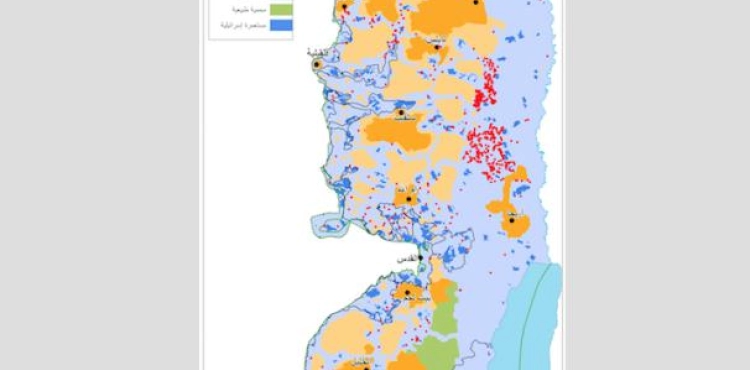The Applied Research Institute "ARIJ" revealed that the so-called "Israeli Civil Administration" had seized 601 archaeological sites in the West Bank, based on a series of Israeli racist laws and orders related to confiscating Palestinian lands.
It is customary in such cases that the affected Palestinian citizens are not informed of the date of publication of the requisition orders and decisions, nor are they allowed to view their contents, in order to avoid legal prosecution in Israeli courts or to avoid the possibility of objecting to them in the periods designated for objection.
Regarding its implementation mechanism, ARIJ points out that these files are usually circulated to the relevant Israeli authorities to initiate the confiscation agenda, such as the office of the head of the infrastructure branch in the so-called “Israeli Civil Administration” and the offices of the regional councils to which each settlement in the West Bank is affiliated. Al-Gharbia, and the local committee office for each settlement, which is targeted for expansion, so that it can follow up on matters related to it such as confiscation of lands.
According to the analysis conducted by the institute, the Israeli military orders focused on racist laws, most notably: the Israeli Military Order No. 363 of 1969, which authorizes the Israeli Civil Administration to declare any area in the West Bank as a “protected area or a natural area” according to orders issued by it. Usually, strict restrictions are imposed on construction and land use on these areas to demand protection of the environment, before they are exploited by Israel for construction or settlement expansion.
In this context, ARIJ confirmed that the occupation authorities have designated three sites in the West Bank as natural reserves, the first of which is: the Nahal Tirza Reserve, which extends over a total area of ​​5,808 dunums of Palestinian land to the northeast of the Israeli settlement of Massawa in the Wadi Al-Fara area. And the Arfot Jericho Reserve, which extends over a total area of ​​4,010 dunums north of the Dead Sea, and the third is the “Rotem Maskiot” reserve, which extends over the lands of the Tubas Governorate with a total area of ​​2,062 dunums, bringing the total area of ​​the natural reserves to 11880 dunums.
In addition to the excuses related to the reserves, the military orders are divided according to "ARIJ" to include the Antiquities Law, according to which 601 archaeological sites in the West Bank were seized as Israeli archaeological sites. The distribution of military orders came in the governorates of Bethlehem (20 locations), Jerusalem governorate (32 sites), Jericho governorate (219 sites), Ramallah governorate (117 sites), Jenin governorate (8 sites), and Nablus governorate (117 sites). The Hebron Governorate (11 sites), and the Qalqilya Governorate (46 sites).
On the twenty-third of June of the year 2020, the Israeli newspaper "Haaretz" published an article on its website raising the alarm due to the Israeli occupation authorities targeting Palestinian homes and facilities in the West Bank with demolitions on the pretext that they were built on sites that Israel has classified as archaeological sites and by Israel. The newspaper stated that in 2019, the occupation authorities issued 118 demolition orders, and this number represents a rise of 162 percent within two years, as it issued 45 demolition orders in 2017, rising to 61 orders in the following year.
The institute emphasized that the occupation authorities use military orders as a means to control and confiscate Palestinian lands under many pretexts, including: military purposes, "absentee property", appropriation for the purpose of public interest, declaration of natural reserves and parks, in addition to controlling archaeological sites.












